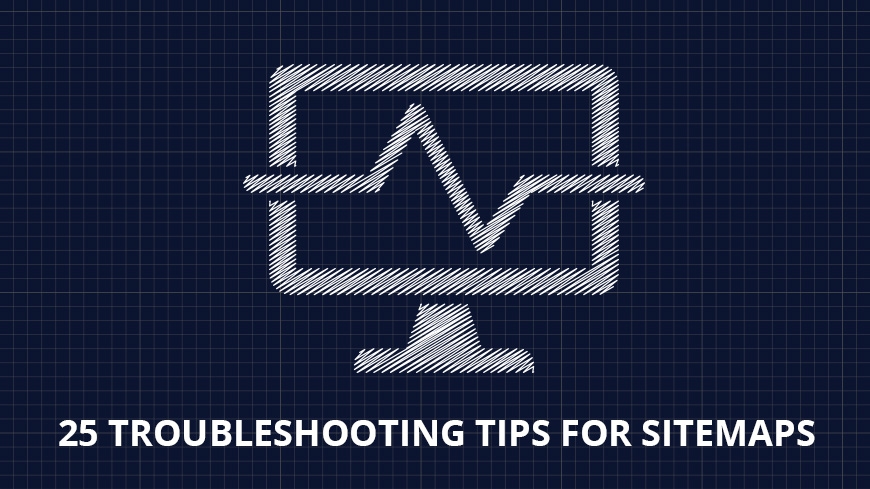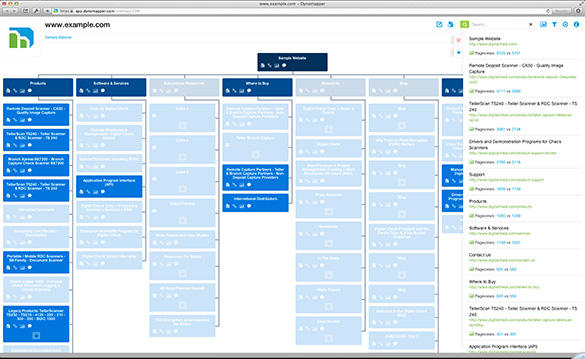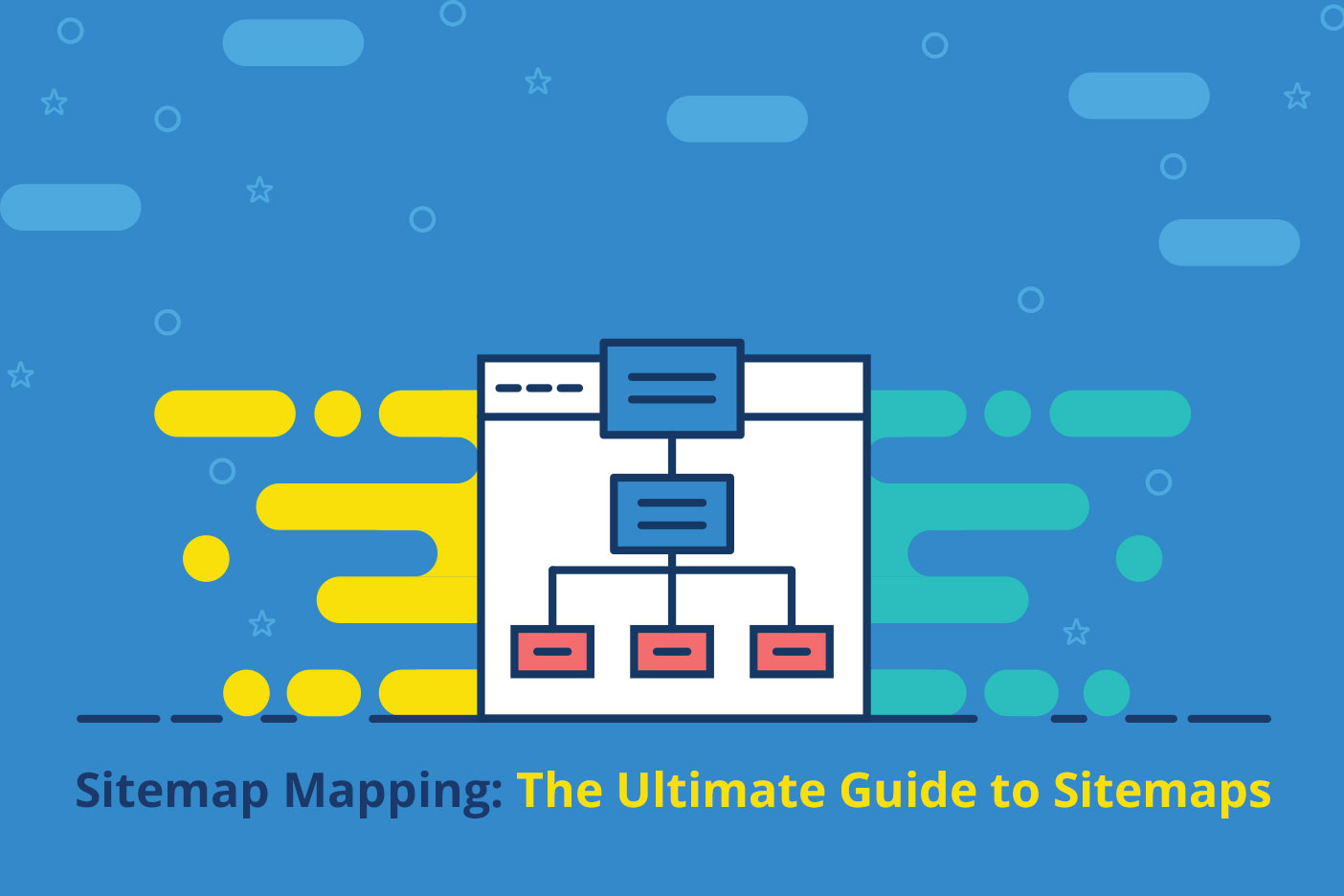Create Sitemaps
25 Troubleshooting Tips for Sitemaps Posted 10.07.2016

A sitemap is a file that contains a list of pages on a website, to allowing web crawlers like Googlebot to crawl a website. Many web crawlers are able to explore and discover all files on a website, but with the help of a sitemap a crawler can gather metadata about the site. This metadata will tell how often information on the page changes, indicating how often the web page should be crawled. It will also show the details about content that would be hard for a search engine to analyze—like file descriptions for images or videos. Google's Search Console allows you to view, add, and test out sitemaps.
Read more5 Sitemaps Best Practices For Bing Posted 05.13.2015

Bing is the second most powerful search engine after Google. In as much as most people pay close attention to everything Google, using Bing can go a long way in ensuring that your content attains more exposure, attracts more traffic and ranks better in the search engines. If you are yet to create a sitemap for Bing, now is the time so long as your CMS or site can handle it. Alternatively, you can install any of the available sitemap plugins that will take care of all the technicalities for you. In fact, you are always free to use a sitemap generator for this purpose.
Read more7 Benefits Of Google Sitemaps You Cannot Just Ignore Posted 05.11.2015

Running a website today is not only a time-consuming affair, but also a complex one. You have to think about the latest strategies to beat the raging competition, churn out tons of content on a daily or weekly basis and implement a myriad of SEO strategies. Webmasters have a demanding job to do; ensuring that their content is indexed, realize higher search engines rankings, users find the required information, among others. It is for these, and many other reasons that website owners are encouraged to create sitemaps to directly notify Google about various changes the website undergoes and ensure that the new or modified content is crawled and indexed.
Read moreA Simple Guide to XML Sitemap Submission Posted 05.04.2015

You have spent hours or days designing your site, or have it done professionally at a hefty cost by an expert web designer. You have then invested heavily to craft unique content and you cannot just wait to deliver your content to the world and share your experiences, products, services, or whatever information you have in mind. Days fly by and you don’t receive visitors to your website-days may translate into months, and you are almost giving up. You are wondering what might be wrong, the answer is simple; you site or content has not been indexed.
Read moreBuilding A Powerful Sitemap - What You Need to Know Posted 04.24.2015

Sitemaps play two main roles; improve user experience and ensures that your content is indexed by the search engines. This means that both web visitors and search engine spiders can find your site’s content, which is very important for search engines optimization. Having the links to all pages in a site in just a single page also ensures that you keep your site organized and also serve your visitors to the best of your website's ability. To realize this, you have to ensure that you create a sitemap that meets all the requirements.
Read moreCommon Sitemaps Errors and How to Fix Them Posted 05.12.2015

Creating an XML or HTML sitemap is no longer a hassle. There are many sitemap generators and plugins that you can always use. However, unless properly formatted and submitted appropriately, you risk encountering a number of errors. This article explains some of the most common errors and how to solve them for successful submission of sitemaps to Google webmaster tools. Upon successfully fixing the errors, you should resubmit the sitemap.
Read moreCompare the Top Visual Sitemap Generators Posted 11.25.2014

Below is a comparison of the most popular visual sitemap generators out today. Each are great in their own special way, but only one offers a comprehensive solution to streamline the discovery and planning phase of your next website build.
| Visual Sitemap Generators | Website Crawler | Content Inventory | Content Audit | Keyword Tracking | Accessibility Testing | Google Analytics |
|---|---|---|---|---|---|---|
 |
√ | √ | √ | √ | √ | √ |
 |
√ | √ | Χ | Χ | √ | Χ |
 |
√ | Χ | Χ | Χ | Χ | √ |
 |
Χ | Χ | Χ | Χ | Χ | Χ |
Signup today!
Why are we the best?
DYNO Mapper offers a complete solution to envision your new website build. DYNO Mapper creates interactive visual sitemaps that represent a website's hierarchy with Google Analytics integration, content audit and inventory, and comments for collaboration between development teams and their clients.
Frequently Asked Questions About Sitemaps Posted 11.15.2016

Sitemaps are the best and easiest way for webmasters to inform major search engines about pages on their website that are open for crawling and indexing. Broken down simply, a sitemap is an XML file that is a list of URLs contained on each site, along with added metadata about each of the URLs so that the search engines can more accurately crawl these sites. This metadata can be anything from how often it changes, when it was last updated, its priority in relation to other pages on the site, and much more.
Read moreGoogle Sitemaps Facts You Must Know Posted 04.15.2015

The number of websites in the world has surpassed 1 billion. This translates to 1 website for every seven people. This has resulted in competition for rankings in SERPs because every website owner wants to be found. Your site’s visibility first depends on the content, which then has to be crawled. This is a bit tricky if you have so many pages full of information, which makes it difficult for Googlebot spider to detect what should be indexed on your site. It is for this reason that Google sitemaps were introduced, which are basically text files with lists of web addresses of all the pages contained on your website.
Read moreHow to Get the Best From XML Sitemaps Posted 05.06.2015

We have over a billion websites in the world today. This means that competition for higher ranking in SERPs is in huge demand today. Website owners are desperate for first page ranking and better brand recognition. There are far too many SEO strategies anyone can turn to, but the truth of the matter is that, no one is guaranteed a better rank in SERPs, especially with the dynamic nature of the web. You have to be the best at what you are doing to move through the ranks. Before your website content is discovered by web surfers, the search engines have to crawl the pages and present the information in an orderly manner to users, this is where XML sitemaps come in. You can use a website mapping tool link DYNO Mapper for this purpose.
Read moreHow to submit sitemaps to Google, Bing, Yahoo, and Ask.com? Posted 03.31.2015

After successfully creating a sitemap for a website, the sitemap must be submitted to main search engines manually. This article will provide users with information and steps one should take to submit the sitemap to search engine sites. Submitting to Google, Bing, and Yahoo separately is worth it and does not take much time.
Read moreHTML Sitemaps - A Table of Contents for Your Website Posted 05.08.2015

It is a common publishing practice to include a table of content to any book. Actually, a book that lacks a TOC is considered incomplete because readers are likely to get lost somewhere along the way. Furthermore, you will need to occasionally come back to the table of contents for direction on where exactly to find the information you are searching for. This is the same principle on which HTML sitemaps operate; they act as tables of content to your website enabling users to easily find the information fast and hassle-free.
Read moreHTML Sitemaps For Better Website Navigation Posted 04.17.2015

HTML is a markup language used to create web pages. HTML sitemaps are links to various pages of a website. Doing this is especially necessary for site visitors because they are not only able to find applicable information as per their needs, but also saves them time. Search engine bots can also use the links to trace content, some that might otherwise remain hidden during normal crawling of the website. It is now imperative that all webmasters clearly understand how to create a sitemap for their site because that simple act has lots of benefits in the long run.
Read moreQualities of a Good Sitemap Posted 05.05.2015

Content-rich websites are not easy to navigate. This is especially true in cases where chunks of content are uploaded daily, a situation that may result in some content not being indexed as expected. On the other hand, it is important to note that research indicates that web surfers only spare a couple of seconds on a website before moving on to the next site, especially if they find navigation tricky. Therefore, sitemaps are used to simplify the navigation of a website. They contain a website’s structure, complete with links to all important sections and subsections of the website. It is therefore paramount that every webmaster creates a sitemap for every website that they manage.
Read moreSignificance of Multiple Sitemaps Posted 05.14.2015

We have close to one billion websites on the World Wide Web. This is a huge number, bearing in mind that each of these struggles to take up the topmost positions in the search engines. There are two major sitemap types recommended for any website; the HTML and XML sitemaps. Having the two installed on the site serves various purposes; especially ensuring that your content is discovered in time and indexed and users don’t have hard time finding information on your site especially if you are operating a content-rich website.
Read more
DYNO Mapper is the first and only Sitemap Generator to include Google Analytics integration
DYNO Mapper includes the ability to integrate your website’s Google Analytics data. It is easy to integrate by just following a two step process of 1) connecting your Google Analytics account and 2) choosing the desired sitemap that matches your data. The process takes only a few seconds to setup. DYNO Mapper will sync and display the data for each page on your sitemap and also include global site data. You can select data from Today, Yesterday, Last 7 Days, Last 30 Days, This Month, Last Month, and Custom Ranges. DYNO Mapper also gives you the ability compare two different date ranges.
DYNO Mapper can filter the pages on your sitemap using Google Analytics metrics. Using this feature helps users quickly identify and display pages of high priority and ones that are of zero importance to the average visitor to a particular website. The Google Analytics filter capability can also be shared with each sitemap allowing end users to also take full advantage of this powerful feature.
 Filter by Analytics: Metrics
Filter by Analytics: Metrics
- Pageviews
- Unique Pageviews
- Avg. Time on Page
- Entrances
- Bounce Rate
- % Exit
Filter by Analytics: Operators
- top
- bottom
- greater than
- less than
- greater than or equal
- less than or equal
- equal
- between
Filter by Analytics: Value
- Choose any value
Using the Filter by Analytics allows users to combine metrics, operators, and values to see the results highlighted on the display of each sitemap. The example shows a filter of Pageviews Top 80%. This will display which pages on your sitemap that are receiving the top 80% of Pageviews within a specified date range. This lets users quickly read, analyze, and draw conclusions from the provided analytics data. After a user filters, the results are also display in list form on the right side flyout list that includes the page title, url, metric, and value. Clicking any of the result pages in the results list will take users to that page.
Read moreSitemap Mapping: The Ultimate Guide to Sitemaps Posted 09.17.2018

What is a Sitemap? | What Types of Sitemaps Are There? | Why do you need a Sitemap? | Who Uses Sitemaps? | How to Create a Sitemap? | How to Submit Sitemaps to Search Engines?
Imagine that you are a content creator. Every week you produce dozens of videos or art pieces which you then post on various websites. At this, your ultimate goal is to bring home traffic to your website to make money by selling merchandise, showing ads, or serving visitors who support you directly. You want your website to be neat, organized, and easy to navigate. Site mapping can help you with that.
Read moreSitemaps for Search Engine Optimization Posted 04.14.2015

Approximately half of the world’s one billion websites don’t have sitemaps. If you are among the 50% yet to create a sitemap, then know that you are losing out on an important SEO strategy that can see you sail through the search engines rankings with no difficulty. Thousands of websites are launched every day and millions of web pages created. When they crawl sites, search engine spiders land anywhere on the site, and then move from one page to another with the aid of HTML codes.
Read moreSitemaps: How to Manage, Monitor, and Maintain Your Sitemaps Posted 09.09.2016

A sitemap is a file that contains a list of the web pages that are on a website. It will relay to Google and other search engines the organization of the website's content. Googlebot and other search engine crawlers will read the sitemap so that they can crawl your site with more knowledge. These sitemaps can also hold important metadata regarding the pages that are listed within the sitemap. Metadata is any information about a web page—like how often it is changed, its importance in relation to the other pages on the site, when it was last updated, and more. Sitemaps can be used to give Google metadata that is associated with particular types of content on the web pages like videos, images, and mobile content. A video entry on a sitemap can indicate the video's running time, age rating, and category. An image entry on a sitemap may tell the type, subject matter, and license.
Read moreSome Useful Sitemap Generation Tips Posted 04.27.2015

Getting ‘organic’ traffic to your website is a very challenging task; which is good and bad at the same time. It is good because it ensures that only the best websites feature on the top of SERPs, ensuring web surfers get access to quality and fresh information. On the other hand, website owners don’t like it because they have to compete with close to a billion other sites with their eyes focused on the medal; high rankings in the search engines. Competition is actually good, because it gives everyone a chance to outsmart the other, including websites. You can really make large strides by simply using a website mapping tool to create sitemaps.
Read moreCreate Visual Sitemaps
Create, edit, customize, and share visual sitemaps integrated with Google Analytics for easy discovery, planning, and collaboration.
Popular Tags
Search Engine Optimization SEO Accessibility Testing Create Sitemaps Sitemaps UX User Experience Sitemap Generator Content Audit Visual Sitemap GeneratorGet Started with DYNO Mapper
Join thousands of professionals using the most advanced visual sitemap tool to simplify discovery, IA, and content planning.
👉 Start Your Free Trial — No credit card required.
